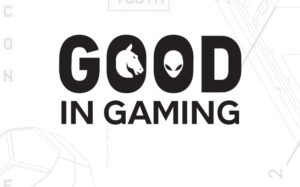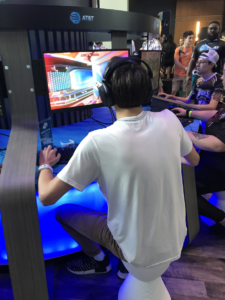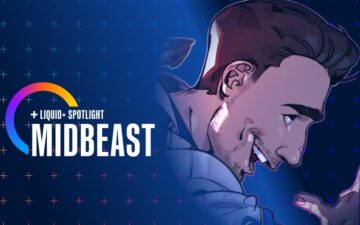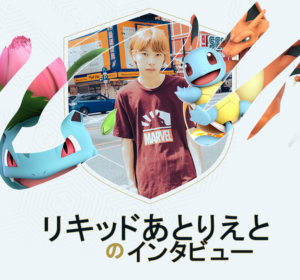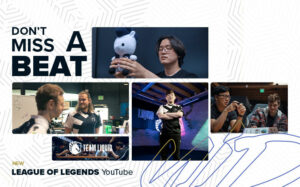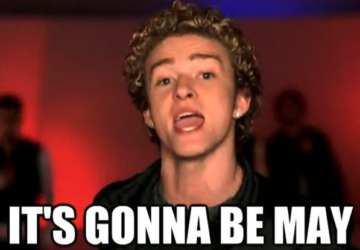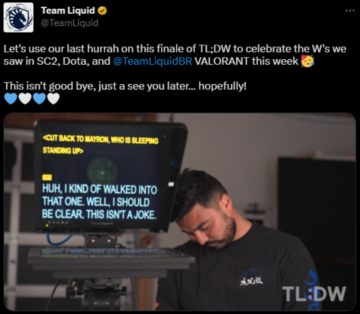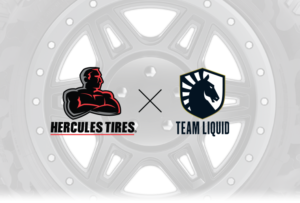In the past few years, competitive raiding has found a wild, unexpected breath of life as a broadcast esport. Competitive raiding has existed for decades as an incredibly durable and healthy grassroots scene with its own little economy. But it wasn’t until 2018 that top guilds Method (later Echo) and Limit (later Liquid) began to stream the race, beginning a broadcast era and turning the Race to World First into what could be considered a fully fledged tier 2 esport.
In the process, the guilds have also given Blizzard a brand new world atop one of the longest histories in esports. The RWF now lays bare both what the raiders and the developers do—and the impact of that is manifold and massive. Strategies and comps from top guilds quickly trickle down, causing the top 20 guilds to move through raids much more quickly, running into bugs, tuning issues, and all kinds of other dilemmas much faster than before too. As the RWF professionalizes and accelerates—Blizzard and the top guilds have to communicate more often and more quickly than ever before.
In that spirit, Liquid Guild’s Head Analyst Royce “Bubbadub” Newcomb and DPS player/Wowhead guide writer Sang sat down with one of Blizzard’s Senior Encounter Designers, Michael Nuthals, to ask him about how Blizzard approaches new raids and learns from old ones. The conversion is an interesting one because it’s a blend of past and present much in the same way that the RWF now is. Both Nuthals and the raiders find themselves looking back as much as they look forward. For each party, there are lessons to be learned and carried forward, but there’s also a simple nostalgia. After all, both the raiders and Nuthals likely started playing WoW with no designs for esports, broadcasts, or anything like that. They started at the Normal level, as normal players, and with the spirit of a kid playing an MMO with friends.
If there’s anything to recommend this interview, in my eyes, it’s seeing the top raiders wear the same nostalgia and excitement that’s carried WoW this far into the future.
Bubba: We heard rumors where Anduin and Jailer were supposed to be in separate instances and then at some point [were] kind of crammed into one instance. Anduin was definitely difficult enough to be an end boss. […] I was wondering if Anduin and Jailer were supposed to be separate or if that was always planned to be one instance.
So our plan was to always have two chapters in Sepulcher of the First Ones. The first eight bosses would be the first chapter, kind of culminating with Anduin, and then a second chapter with three bosses, culminating with the Jailer. We actually had a point in time where we were going to hold those last three for a week and release it all with the launch of Mythic.
We had a plan to hold that even a little longer to help our narrative folks be able to tell Anduin’s story of the recovery from the domination and the players prepping themselves for this eventual confrontation with the Jailer. But we ended up choosing to launch it all with Mythic to create a more cohesive Mythic race. So it was always intended that Anduin would be challenging.
Sang: Now that Sepulcher is done, do you think if we went back would you have changed it up a little bit? Something like [what you said], to space it out a little more?
You know, I think we always learn lessons when we are watching players go through each of our raids.
I have a cute little anecdote here of Tomb of Sargeras. We had heard the community call it Tomb of Soak-geras where there [were] a lot of these mechanics where players had to go into a thing and soak it to prevent some terrible effect from befalling your raid. We heard that and we became a lot more cognizant of, like, “Hey, is there a mechanic that’s showing up a lot over the course of a raid?” Making sure we’re providing a variety.
We’re always learning as we are looking back. There’s a couple of things we know we want to carry forward as we come into Dragonflight and with Vault of the Incarnates. One of those is we wanted to make sure that we were thinking about our encounters in a way that players can always have a chance to recover. There’s some mechanics that happened in Sepulcher of the First Ones where one misstep may cause the whole raid to wipe and your attempt’s done. It’s game over.
First of all, it’s not very fun. The game’s over, you don’t get a chance to show your skill and your mastery of the encounter and of your classes and overcome those challenges. And it’s hard when you get into situations where it’s a couple of weeks [after release] and you’re bringing new folks in. It’s hard for them to find their footing and feel like they’re having a good time on farm night when they need to react very precisely.
So we’re thinking about our encounters more in a way of less one shot kill kind of mechanics and more like, “How do we lose as a team?” What kind of series of events needs to happen that cascade to a failure? The other one is, we really want to recapture this, like, core RPG fantasy in Vault of the Incarnates where I slay a monster, I take all of his cool stuff, and I use all of his cool stuff to slay the next monster.
Bubba: It sounds like a much different direction than the last raid. On Jailer, you go to phase three and if you miss one missile, if one person in the raid is dead, you’re pretty much just wiping. […]
We certainly don’t make our endbosses easy for you folks do we?
Bubbadub: [Laughs] That’s a good thing though.
Sang: I noticed a lot of some of the bosses they’ll have throwbacks to past bosses and it’s kind of it’s kind of fun to see that in bosses. Raszageth has a Thaddius mechanic and an Imperator Mar’gok Mechanic. It’s kind of fun to see that appear on bosses. It brings back good memories, I think.
That’s awesome to hear! I have a philosophy I like to talk to the team about— something old, something borrowed, something new, but not necessarily blue. (Unless you’re Raszageth.) WoW has such a storied history of encounters and when we think about solutions to problems, that solution might already be in our backlog of history.
Broodkeeper is an example of this in Vault of the Incarnates. Where we’re like, “There’s gonna be some eggs and we want to have that quadruped Dragonkin form. Let’s look back at encounters that kind of echo that.” What did they do and how can we apply what those encounters did in the past to what we’re trying to do in the future?
A concept I like to think about as well, is that players see World of Warcraft through the lens of their class. The combat team makes all these awesome buttons that the players can interact with. It’s my team’s responsibility to create locks that those keys can kind of turn. So we’re trying to create these combat puzzles that classes are the answer to. So, often we also look back to see how a previous encounter solved that problem in the past. How do we make that [solution] cool with the new buttons that players have? How can we iterate on that and make a new experience?
Bubba: Do you actually, on that note, have a balance between old and new ways of dealing with mechanics?
Yeah, absolutely. We’re always trying to write something fresh and new for our players but there are also mechanics that, you know, [are classic.] A swirl is fun to dodge. A big Dragon’s Breath that breathes out fire is fun to dodge – it’s very thematic. That’s something we look for as we’re going into the history. Where have we hit fantasies really well? […] Players should walk away [saying,] “Of course, that’s exactly what I expect this boss to do.” And that’s one of our goals in the encounter team, [to] really marry that fantasy storytelling with cool gameplay mechanics
Sang: Speaking of cool gameplay mechanics, when’s dragon riding being involved in a raid boss? Come on. Be honest.
That’s an awesome question. We’re already kind of experimenting with what it’s like to have dragon riding in an instant setting with the Nokhud Offensive, where players can mount their dragons and fly from the different boss locations. I don’t want to say never. It sounds super fun.
Sang: Particularly with council bosses, where there’s like four bosses you’re fighting at the same time, it’s very easy for players to get overwhelmed. [… ] What are some of the difficulties in balancing a boss like that?
Let me start by talking a little bit about how we kind of approach a raid as a whole. That might answer some of this. When we think about a raid, like Vault of the Incarnates, we’re trying to not just look at a single boss, but we’re trying to look at all the bosses as a cohesive experience. And a council boss is a great opportunity for us to shine a light on classes that are really good at multi-target cleave, that can focus on multiple targets at once. Whereas a Terros, for example, is a mostly single target encounter and that lets classes that are good at single-target shine.
You also want to look at the healing profiles. Some encounters are good for more heal-over-timey kinds of classes, like your druids, or really incentivize you to take more single-target or tank-target healers. We look over the course of a raid and think about, are we hitting those different profiles? Is there a fight that is really awesome for Moonkin to play? […] We want to make sure we’re creating these moments that every spec and class has a chance to shine with.
Sang: I was also thinking, are you ever afraid to make those bosses where it’s really [focused on] niche specs? Would you be afraid to make those bosses very difficult to the point where you would stack, like 12 or 12+ of the same class?
Really the goal is to create experiences where different classes can shine. […] They might not have that in the next encounter but this is the encounter they’re good at. Guilds will not always have a really deep bench where they can afford to have, like, several Moonkins on the bench that they can pull in. Some of them, you know, have the groups they have. So when we’re thinking about encounters, it’s cool to have an encounter where my group’s Moonkin can be really awesome at this encounter. But then my DPS warrior can be awesome at this other encounter.
Bubba: Are you guys also, I guess, careful with where you put [council bosses] in the raid? I think Lords of dread is a pretty good example, right? […] Like, if you have that too late in the instance, you have to balance that with the difficulty of the boss.
Yeah, I think when we’re talking about early bosses versus late bosses, we think about what we can expect and offer additional challenges that aren’t just a single target challenge. So for example, the Council of Blood encounter from Castle Nathria had an add that would spawn and would channel on one of the casters and you had to kill it before you could go back to your two or three target cleave. So that became a moment of a single-target challenge, kind of embedded in a larger multi-cleave encounter. So there’s definitely considerations we think about as we are building encounters, depending on where they are in the raid as a whole.
Bubba: I think most harder fights have a few different damage profiles. And that’s actually really fun to figure out, right? I mean Anduin is probably the best example where you want to make sure you can break [the souls] out, you need to be able to DPS the kingsborne phases, and you also need to have enough [burst] single target so that the last phase you are able to, you know, kill the boss finally. I think it’s really cool to make those decisions as someone who’s strategizing for these bosses.
It’s certainly a goal of ours, that we want to have certain fights that are—especially in the mythic difficulties—opportunities for guilds to really flex their knowledge of the game and be able to bring in players who have particular profiles to beat that combat puzzle.
Sang: Do you see yourself doing more raids, maybe smaller in size in general, because it’s usually one raid per tier – that’s what the idea is. But maybe you have a six boss raid and then a three boss raid within the same tier. Do you see that happening?
You know, we’re always listening to what the players want out of raiding. No talk about future plans, right? But creating different-sized experiences is a really cool idea and it’s something I’d love to talk to the team about.
Writer/Editor // Austin “Plyff” Ryan
Interviewers // Royce “Bubbadub” Newcomb & Sang
Graphics // Zack Kiesewetter


